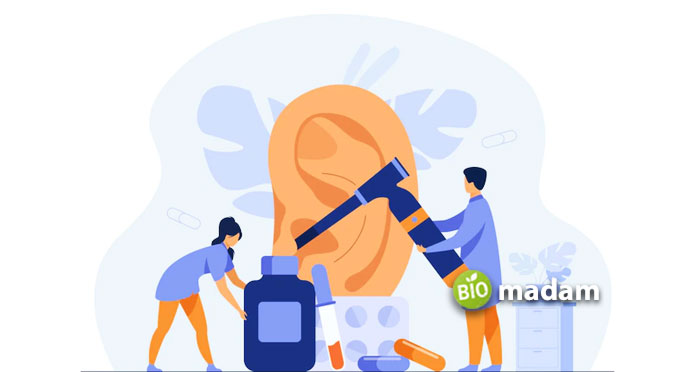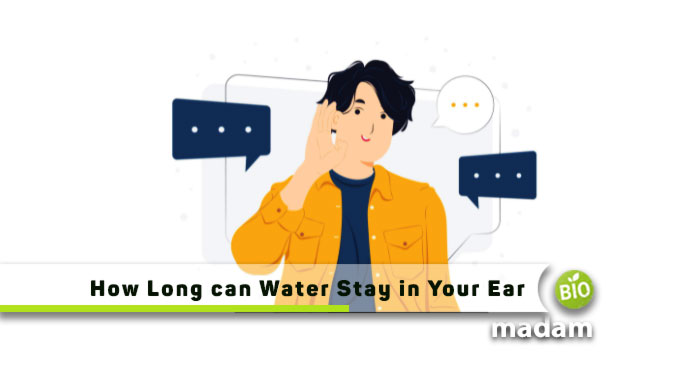Recently updated on October 5th, 2023 at 06:21 am
If you have recently been swimming or scuba diving or just taken a shower, it is common to have some water in your ears that wouldn’t just come out. You may ignore it completely or run to the doctor immediately as it can be quite annoying; yet if you want to know how long can water stay in your ear, let’s tell you that first.
Water can stay in your ears for up to 2 days and may come out itself. You might feel improvement in hearing in a day or more than two days depending on the ear wax and other physical attributes related to your ear. However, if you are worried, do not wait and go to the doctor. And do not forget to take measures to avoid water in your ears next time. It may lead to an ear infection.
How to Know if there is Water in my Ear?
The most common water in ear symptoms is distorted sound and the feeling of something hitting your eardrum. However, distorted sound may indicate another underlying condition as well. If you have water in your ear, other symptoms include:
- Itching in the ear canal
- Inflamed ear canal
- Mild pain in the outer ear
- Clear discharge from the ear
Most of the symptoms mentioned above show over time, and you will be able to understand that you have water in your ear. Though it is not dangerous if the water stays in your ear for a few days, the symptoms might worsen if left untreated for a prolonged period.
What happens if you have Water in your Ear for too Long?
As we discussed, sometimes you might have water in your ear canal that may not come out and cause discomfort. Typically, it leaves the ear in a day or two. But, what if it has been weeks and it’s still not better?
When you have water in your ear for a long time, it may cause an infection in your ear known as Otitis Externa or Swimmer’s ear.
What is Otitis Externa?
Otitis externa exhibits itself as an inflammation of the external ear canal. It usually occurs due to frequent exposure to water and is quite common in swimmers and scuba divers. If you have had the feeling of water in your ear for some time and also experiencing temporary hearing loss, your ear might have developed Otitis. Otitis could be in the inner ear, middle ear, or outer ear and may vary in severity. It is also suggested to use antibacterial drops or consult your doctor to ensure it does not worsen.
To prevent otitis media, make sure to cover your ears while swimming or drain the water from the ear canal if already present.
How to Get Water out of Your Ear when Nothing Else Works?

Now when you know that you have water in your ear and you cannot find your physician to do anything about it, you can try a few methods that can help drain water out of your ear. Here’s what you can do:
Move Your Earlobe
The most basic method to get water out of your ear is moving or juggling your earlobe. Simply hold your earlobe with your thumb and index finger and juggle it with your head tilted towards the shoulder. This movement causes the water to flow to other canal and relieve you. Though, if you experience any pain while doing so, do not continue as you may have an ear infection.
Chew
The next common method of getting water out of your ear is the use of chewing movement. As the nose, throat, and ear are interlinked, this chewing movement will have a similar effect to jiggling the earlobe and aid in the removal of water. You may also frequently try yawning if this does not work.
Use a Dryer
It is common to evaporate water if you cannot clean it from a surface. Similarly, if you cannot get the water out of your ear canal through any of these methods, try drying it using a blow dryer. However, make sure to use it correctly so as not to cause further harm to your ear.
- Plugin your hairdryer and set it in on the lowest setting.
- Hold it at a 10-inch distance from the ear and tug your ear before turning it on.
- Turn on your blow dryer and move in to and fro movement.
- Make sure not to keep it too close to the ear.
Use Water
This technique may not sound the most rational, yet there’s nothing wrong with giving it a shot, as many people suggest it works. Fill the affected year with clean water using a dropper. Let it sit for a few seconds and tilt your head to drain all of it. It is most likely to bring the previously present water in the ear out.
Eardrops
If you are scared that using water to drain water from the eat might not work, do not worry – you can get OTC eardrops at your nearest pharmacy. They help you relieve the irritation by reducing moisture in the ear canal and killing bacteria to avoid infections.
What to do when it Feels Like Water in Ear but no Water?
While mostly the symptoms are true to diagnosis, sometimes you might feel the presence of water in the ear canal, but there isn’t any. Normally, the feeling of having something in your ear is associated with issues in hearing or feeling fullness in the ear. It might not necessarily be caused by water, but anything in the ear that should not be.
You may feel like you have water in your ear when you do not have it because of fungus or bacterial infection.
When Should you Visit the Doctor?
As water sometimes drains out on its own after two to three days, you do not have to immediately run to the doctor if you suspect water in your ear. However, if the signs and symptoms prolong, it is best to consult your physician and mention all signs so they can identify if there are any other problems.
The Bottom Line
Having water in your ear can be annoying, and you want to get rid of it as soon as possible. It does not only affect hearing temporarily but makes you feel the presence of fluid in the ear which is not very pleasing. You can wait for a few days for the water to drain on its own, get an OTC medicine, or try some of the tricks that have helped others get rid of water or follow this guide to prevent it while showering. If it does not get better or the pain gets unbearable, do not delay and visit your doctor.

Meet me; I am Paulina Zaniewska, who’s more hooked on providing the best health blog. I’ve always been so determined to compete as a nutritionist, and here I am, done with a Master’s in food technology. My brilliant performance throughout encouraged me to help people.

